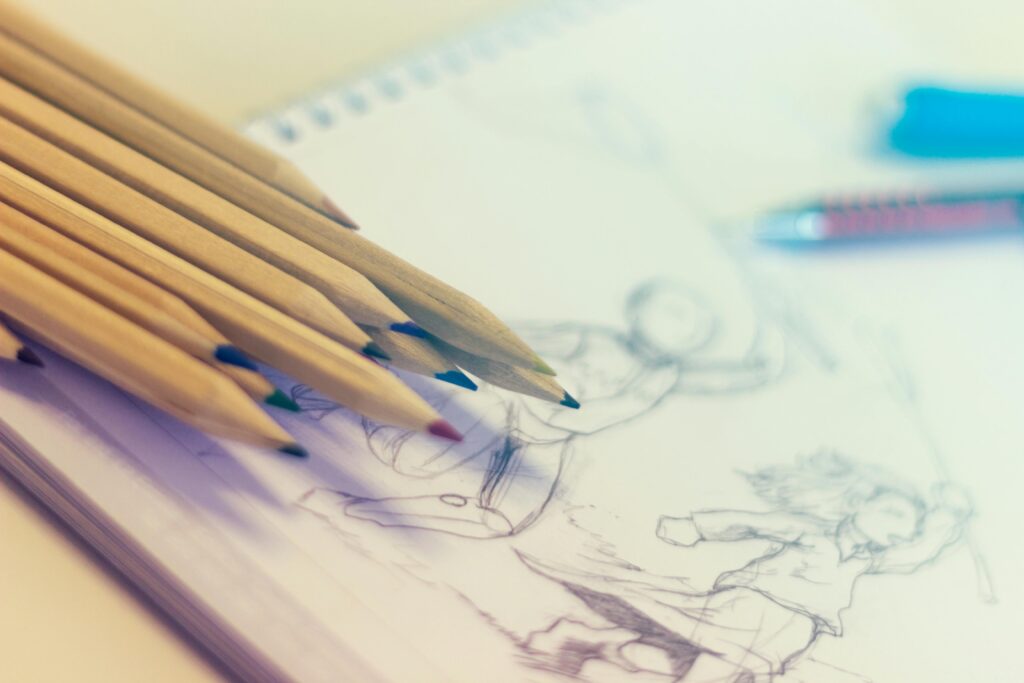Art as a hobby is not a new idea. Perhaps even “art as a hobby” is too broad of a statement. Yet, it is within that generalization that the beauty of art manifests. This particular piece will focus specifically on art displayed in the form of drawing.
To set out on this hobby endeavor, all you’ll need is a writing utensil and a sheet of paper. Dedicating a few minutes a day to drawing is a good way to start, and you can do so almost anywhere. To get familiarized with the basics, you can begin by watching sketching videos as a guide, while also observing and improvising off of the people, places and objects in your environment. Remember not to be so hard on yourself. Drawing is a form of design, a method of interpreting the world from your perspective, or something completely unique. Maybe you start off with stick figures, but as you spend more time drawing and observing, learning and making efforts, you will start to feel more like a pro.
Whether you are a veteran in drawing or a newbie, keep in mind that your design itself isn’t the only thing that can be up for interpretation. How you bring your drawing to life is part of the interpretive process. If all you have is a pencil and paper, there are different ways to incorporate shading and texture with just that alone. One technique that you can start off with is pressure shading, which is when you change the pressure that you apply on your pencil to create darker and lighter shades. Another technique is called stippling, where you use dots for a texture-like approach. In addition to that is cross-hatching, where intersecting lines are meant to establish depth and texture. These are just some of the many methods that you can incorporate into your work, don’t be afraid to explore what they all are.
Great examples of pressure shading are Michelangelo’s drawings and sketches, where he often incorporates red, black and white chalk to establish subtle layers and shades. Miguel Endara is another artist known for his detailed stippling works of extensive detail produced by dots alone. In regards to cross-hatching, Albrecht Dürer, Rembrandt, Leonardo da Vinci and Jasper Johns are just some of the many skilled artists who have made profound works using this technique. If you take the time to look up any of these artists, you’ll recognize that their works are unique to each individual. You don’t have to make pieces just like theirs; rather, consider these pieces as inspiration for your own designs.
Even when your coloring and media mediums change, these mechanisms of formulating shade and texture can be carried over by way of colored pencils, markers, pastels, paints and so on; it’s just a matter of how you choose to go about it. Some materials to consider include graphite pencils which have a range of light and dark values for shading, blending stumps for soft gradients and to smooth out lines and any tool that can allow for color variations that permit rich tones, fine details and vivid effects. There’s a mix of media paper for dry and wet media, smooth paper that’s best for when using graphite and colored pencils and textured papers for vibrant colors.
Additionally, in the age of advanced technology, digital art is also a valuable vehicle of artistic expression. The software most associated with this mode of artistic creation are 3D programs and graphic design accessible through specific apps like Adobe, Pro Create, Krita, Clip Studio Art, etc. This method allows for flexibility and efficiency without the confines of physical materials and easier means to correct errors. This medium also makes global outreach more accessible as pieces can instantly be shared online through social media and websites.
Maybe you’ve come this far and think that all of this sounds like a lot. Or maybe you’re on the opposite end and think that this all sounds too simple. What I say to either thought process is to simply give drawing a try. Invest a few minutes into it, and whether you end up thinking at least you tried. The beauty of drawing is that there is not one way to go about it. There are different ways to display the mood of a scene or a person. There are different ways to draw a flower in bloom, a child through the stages of aging, a bowl of fruit, a city line view and so on. Remember that art as a hobby is up to your creative direction. Have fun seeing where your imagination goes.

